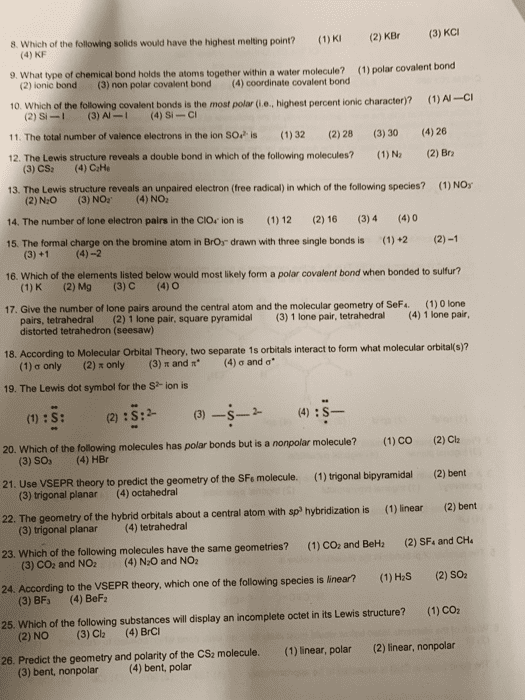CHE 107 Study Guide - Midterm Guide: Valence Bond Theory, Molecular Geometry, Ionic Compound
Document Summary
Chapter 5: electromagnetic radiation, wavelike properties of matter, quantum numbers, atomic orbitals, electron configurations and the periodic table, orbital diagrams, periodic trends. Chapter 6: ions and ionic radii, ionization energy, electron affinity, octet rule, ionic bond and ionic solids, main group chemistry. Chapter 7: covalent bonds, electronegativity, lewis dot formulas and structures, resonance, formal charges, bond enthalpy. Chapter 8: molecular geometry from lewis structures (vsepr model, valence bond theory, molecular orbital theory. Most of the electromagnetic spectrum is undetectable with the human eye. The human eye can only detect a very small portion of the spectrum, from 380 nm (3. 8 x. 10-7 m) to 780 nm (7. 8 x 10^-7 m). Wavelength ( ) and frequency (v) are inversely proportional! The relationship between wavelength and frequency is defined as: With a little bit of algebra, you can also derive the equation for both and v: = c / v, v = c / .


